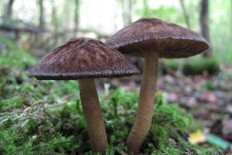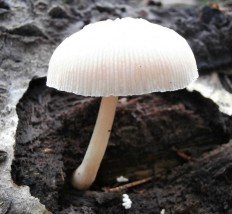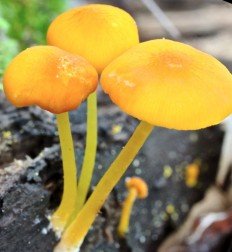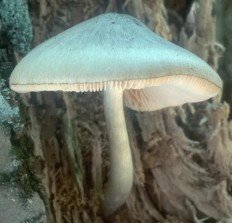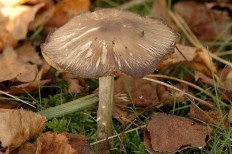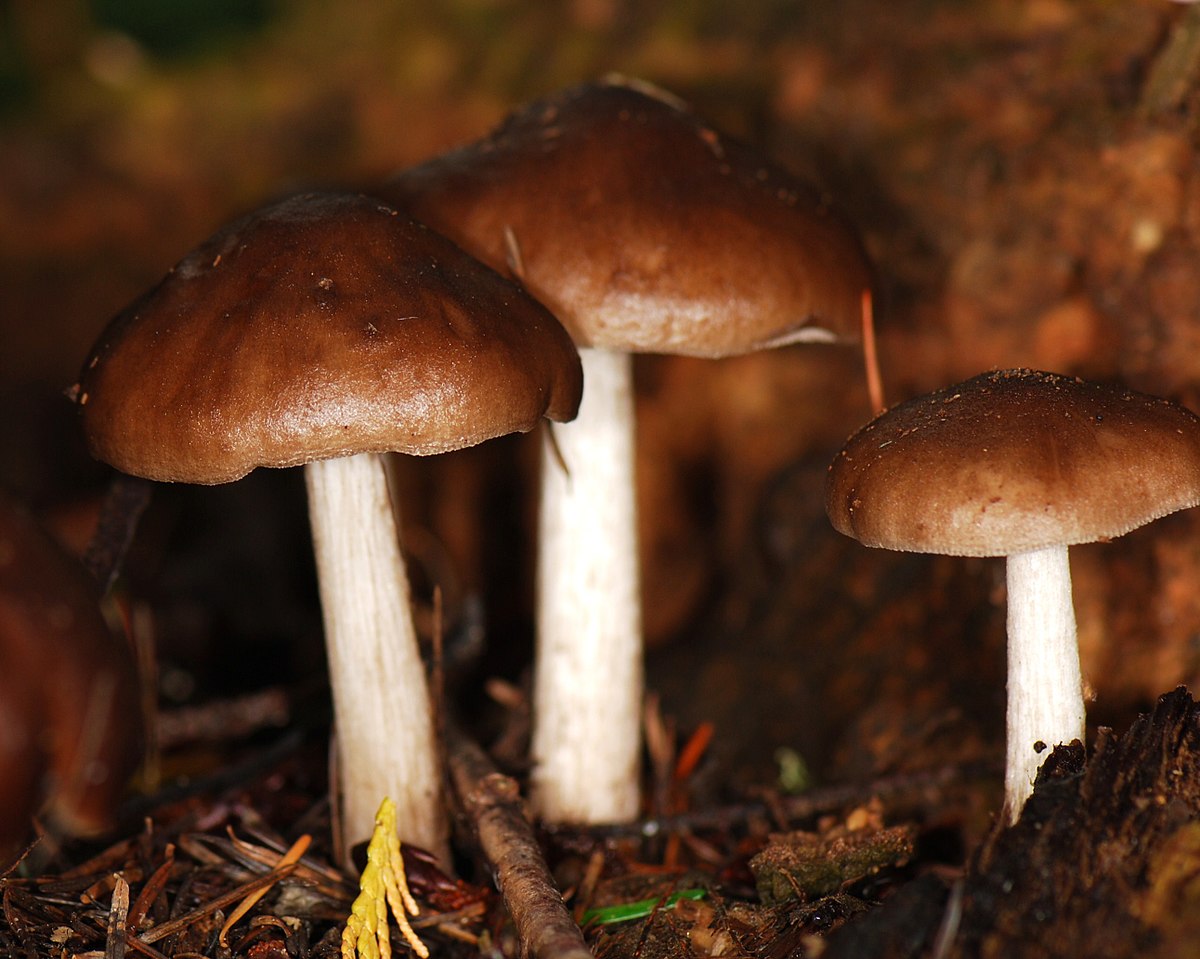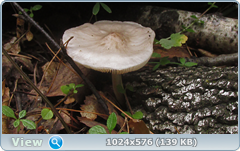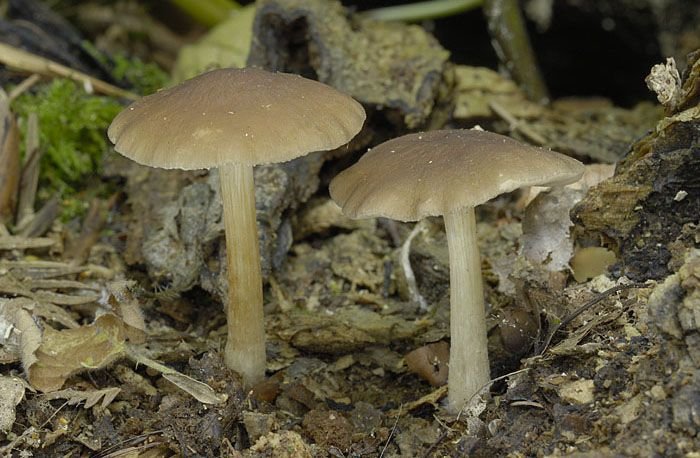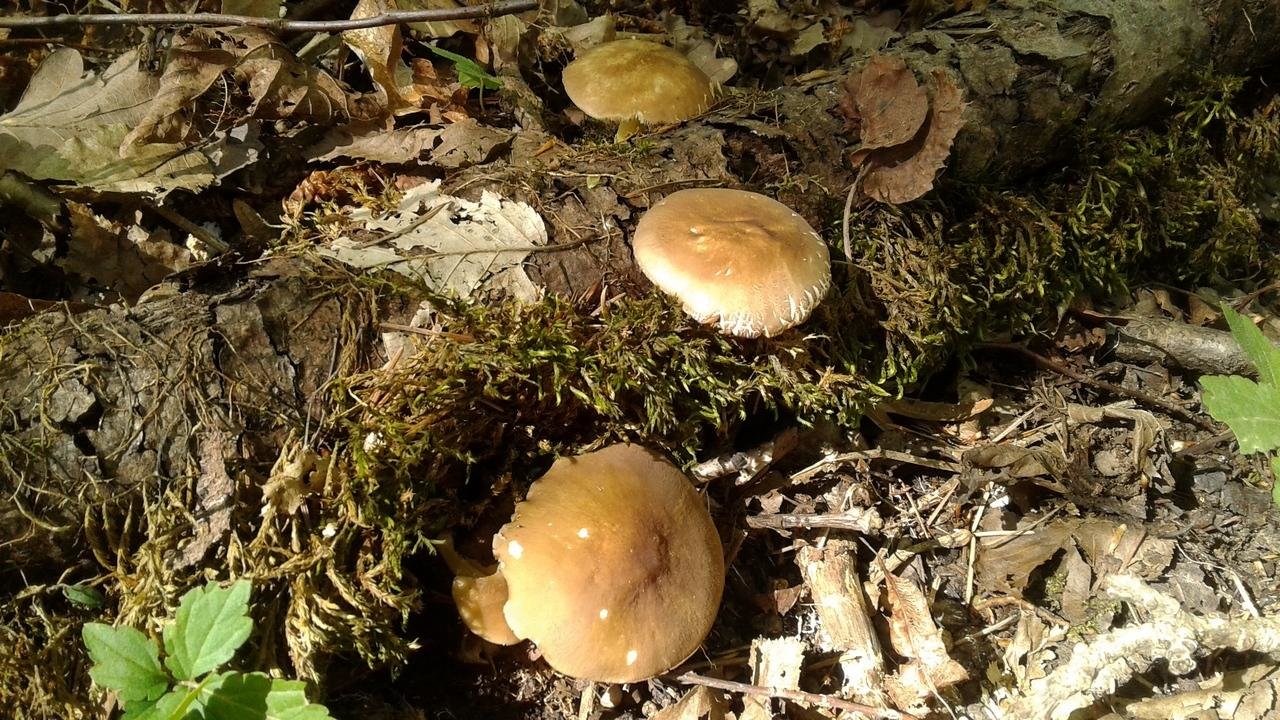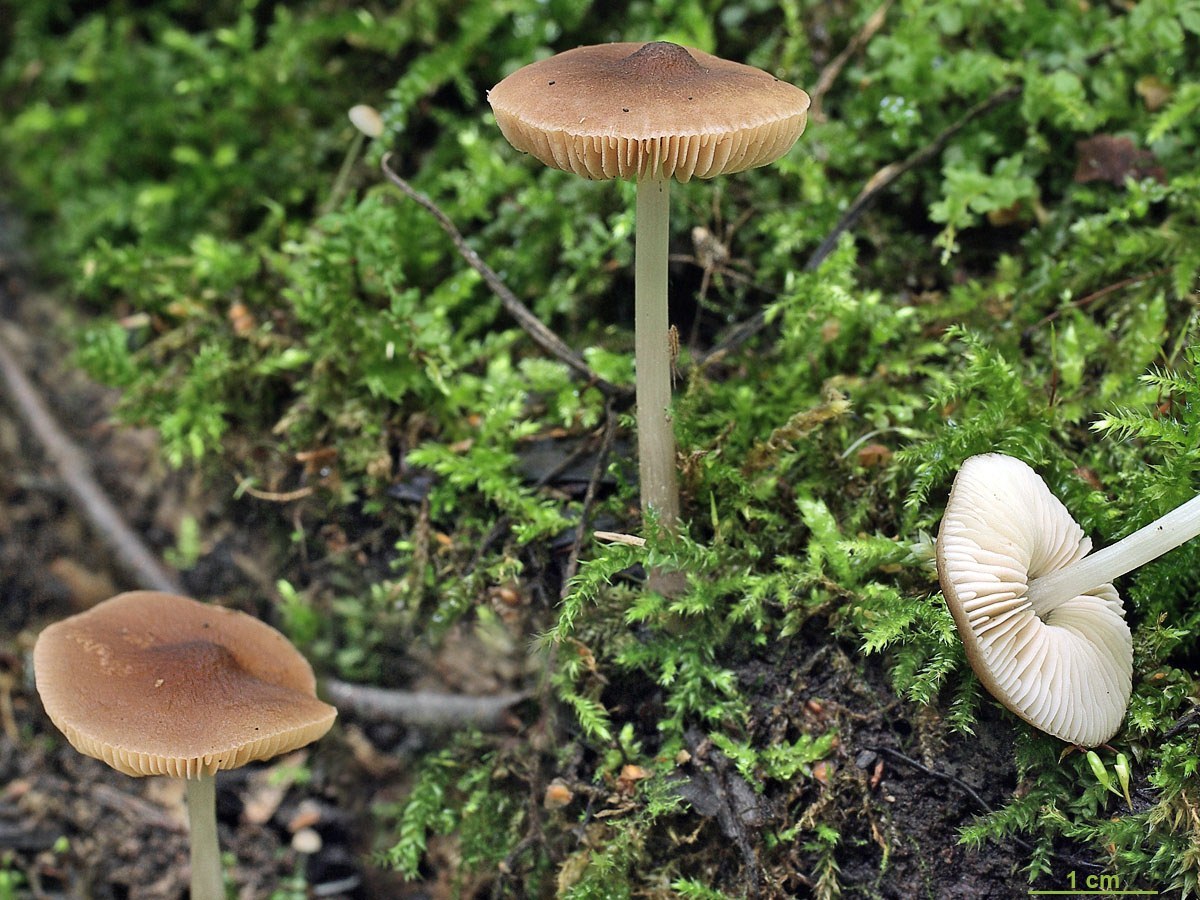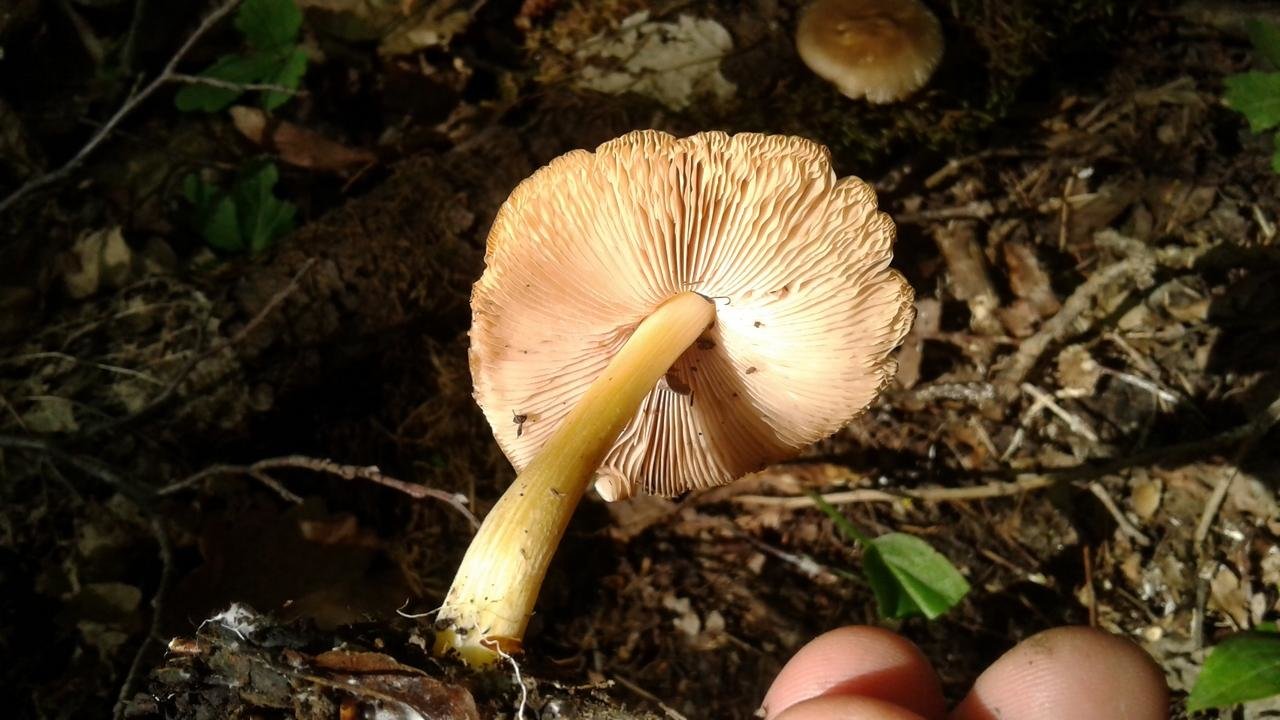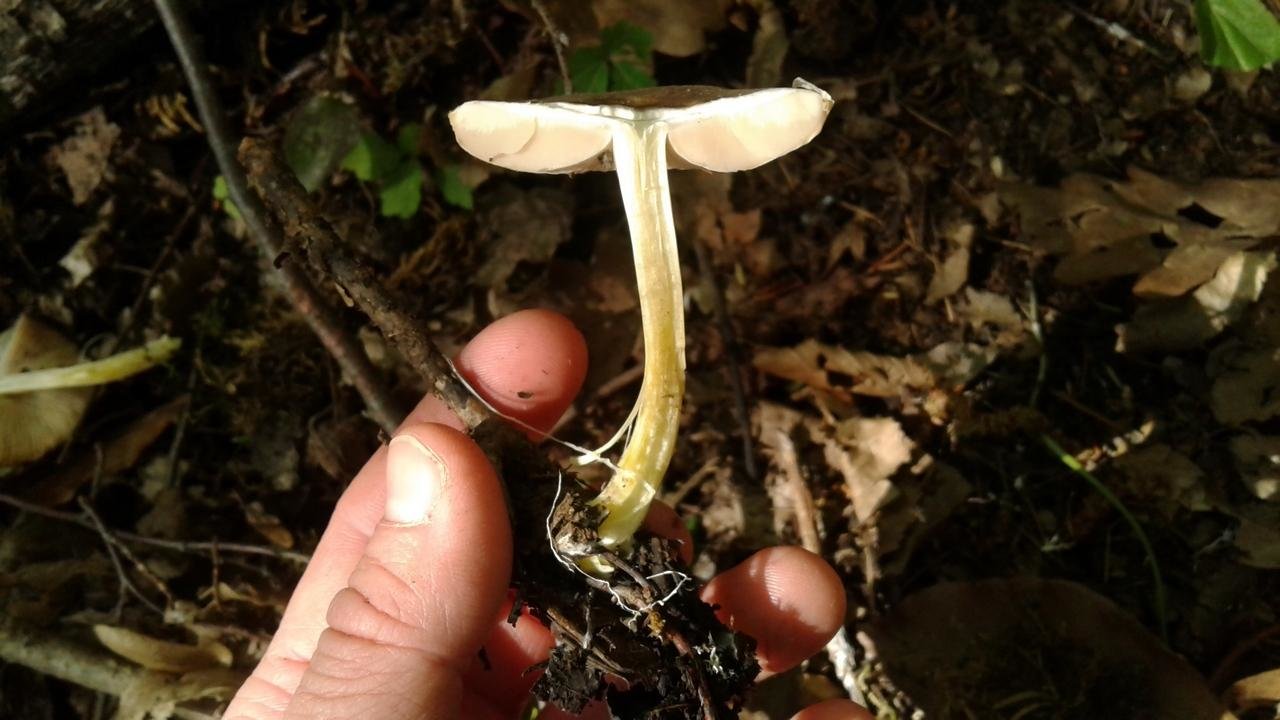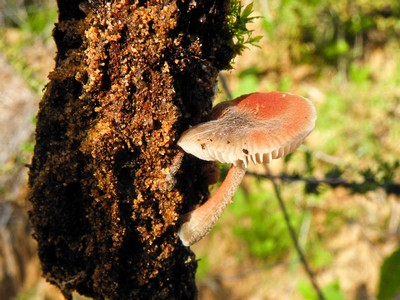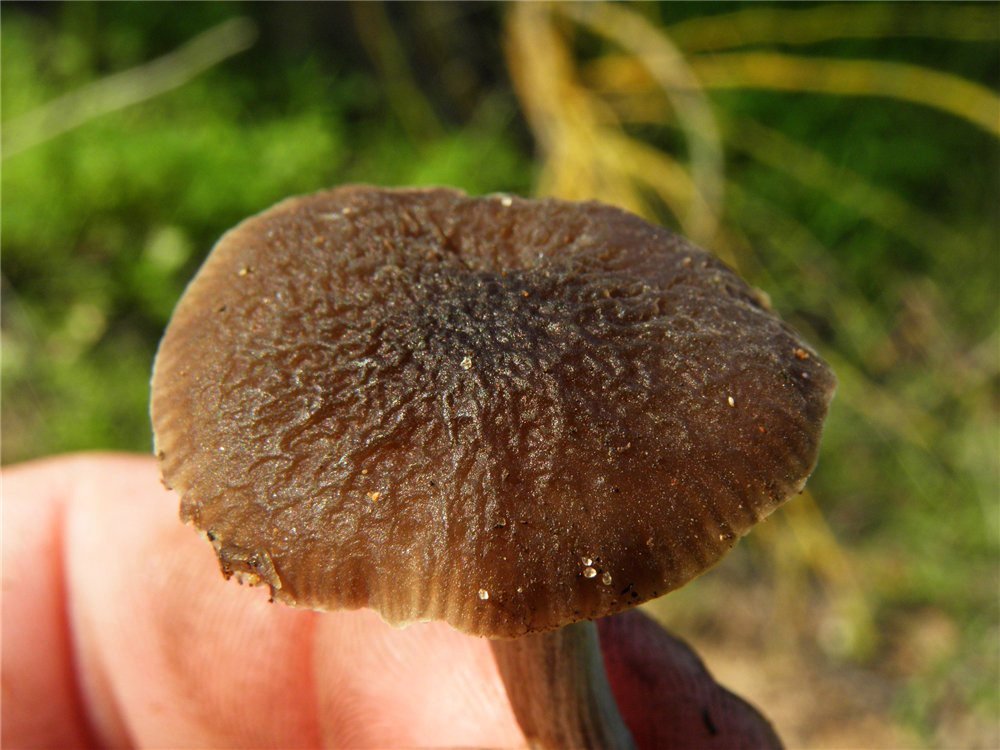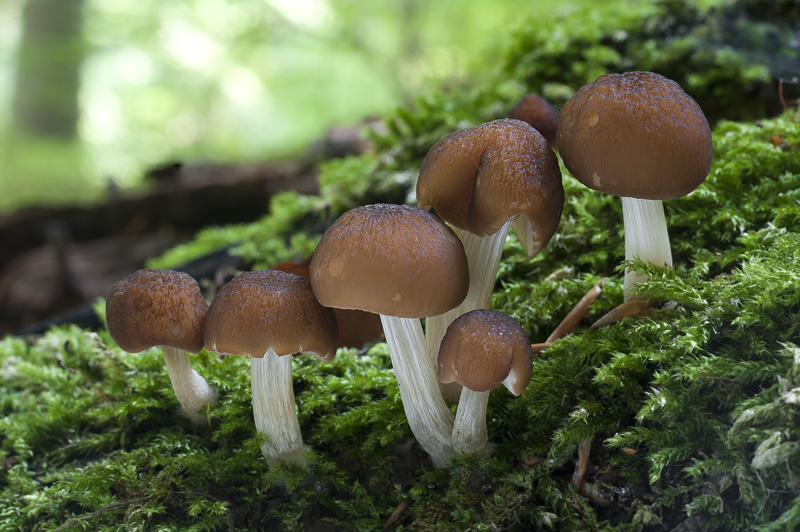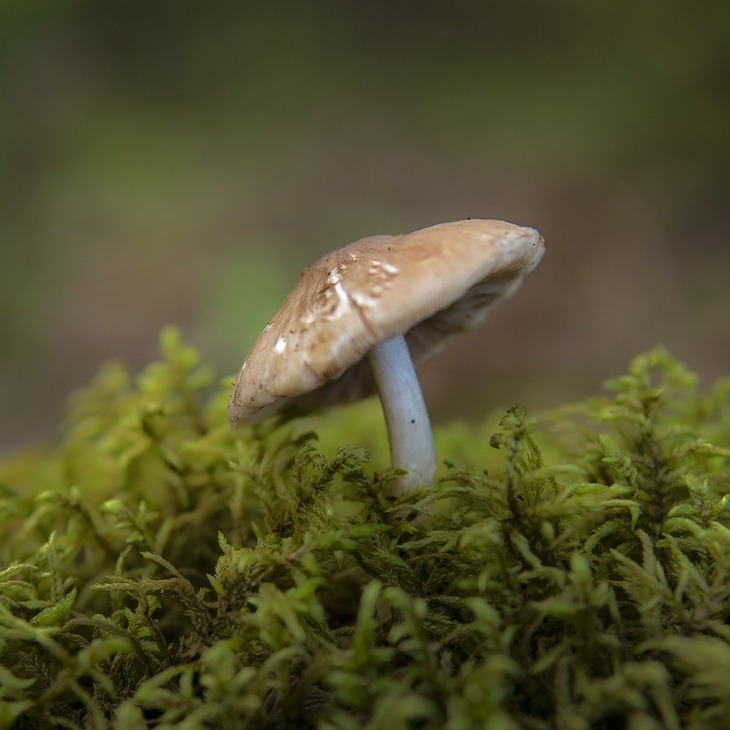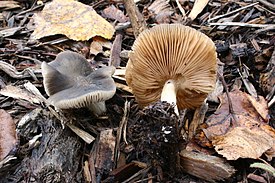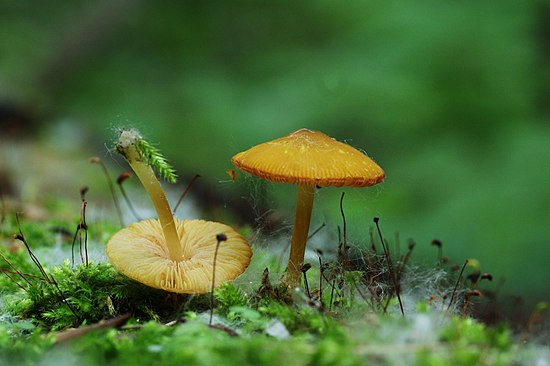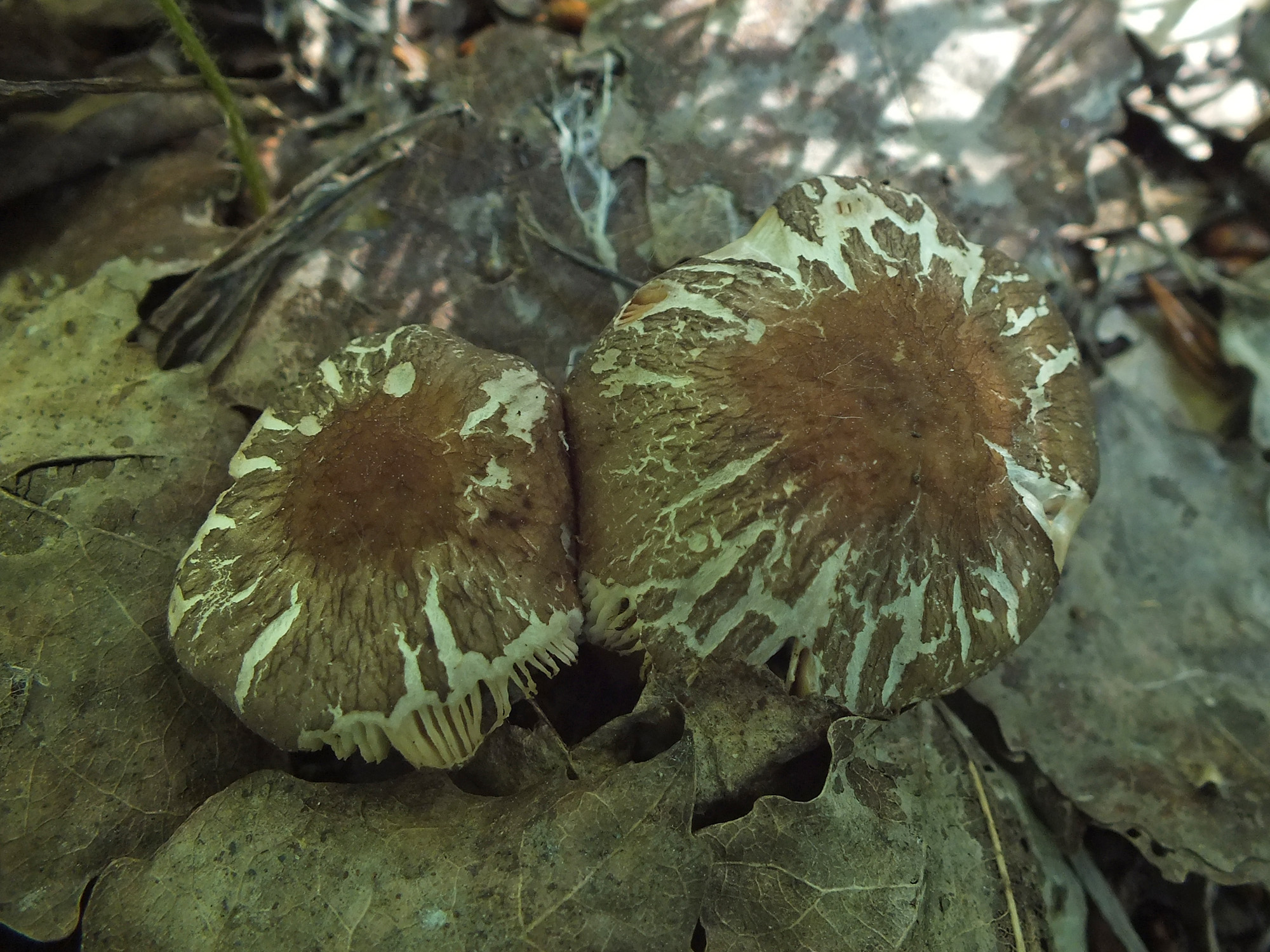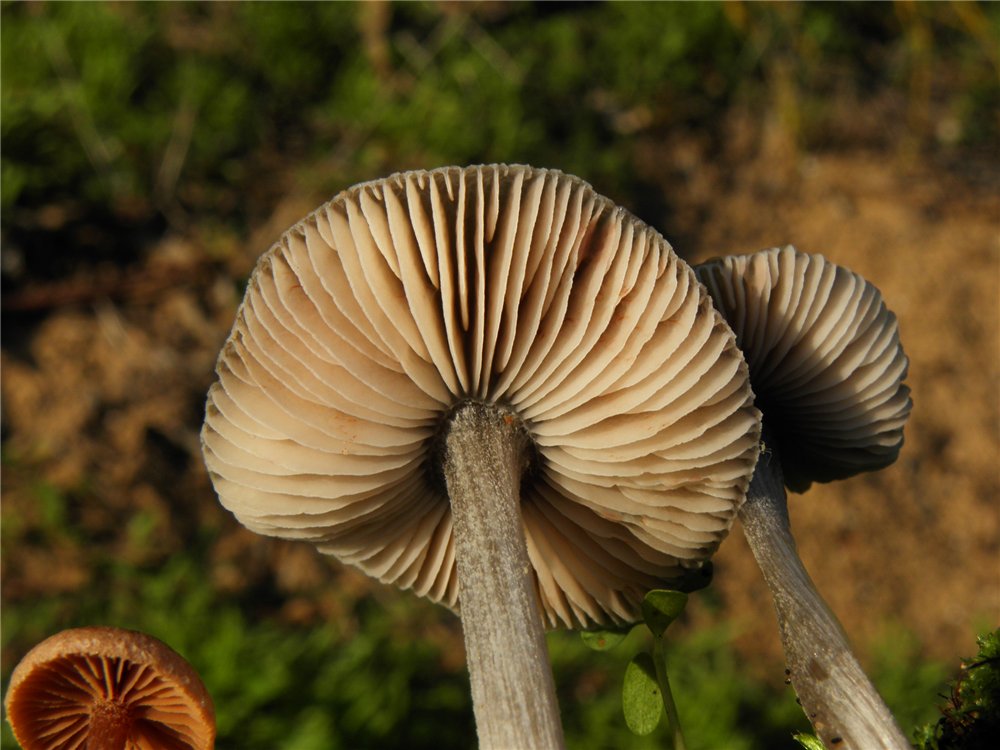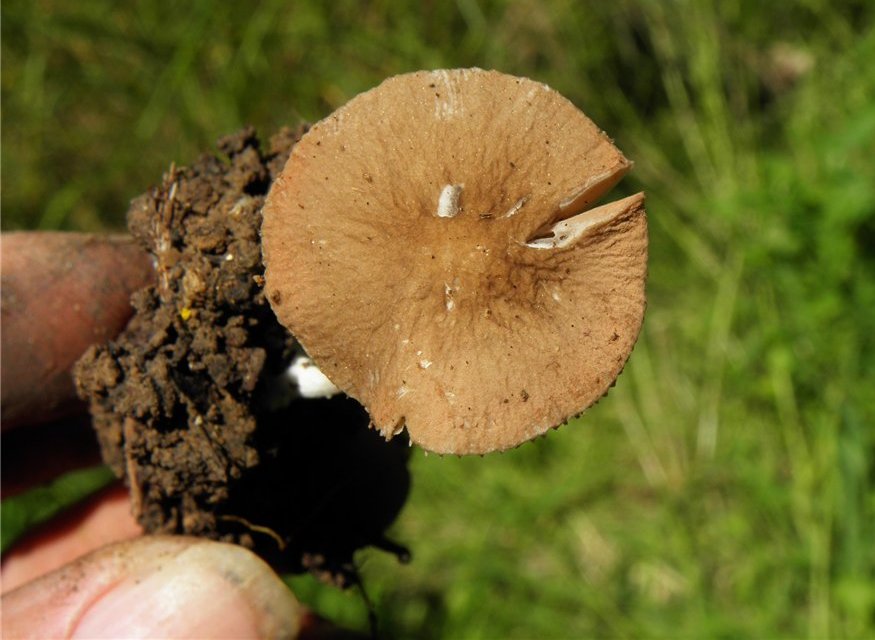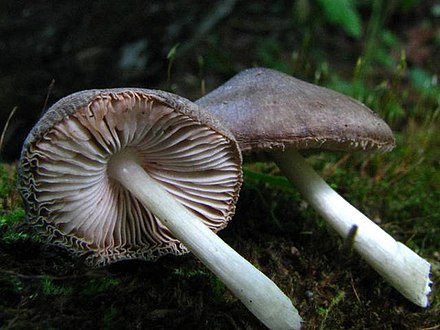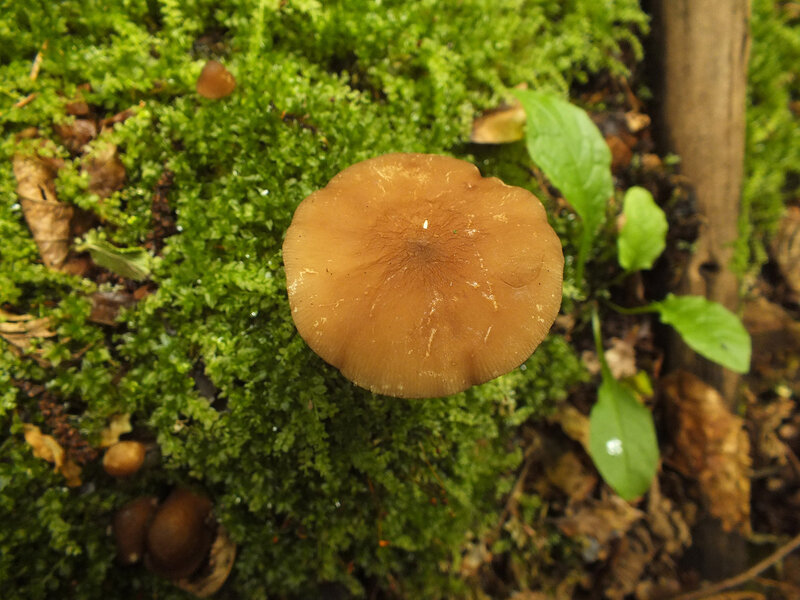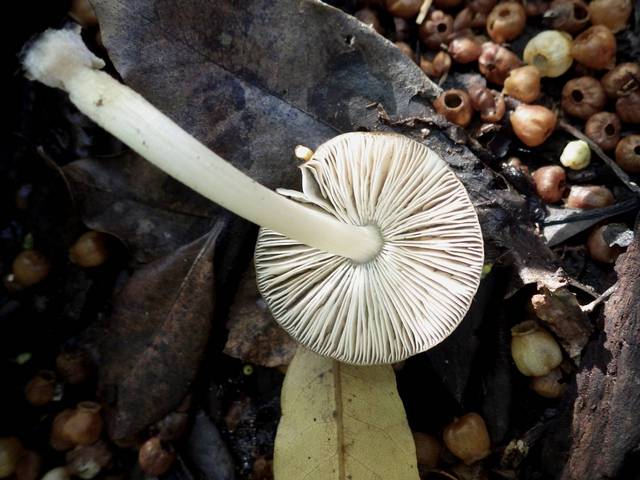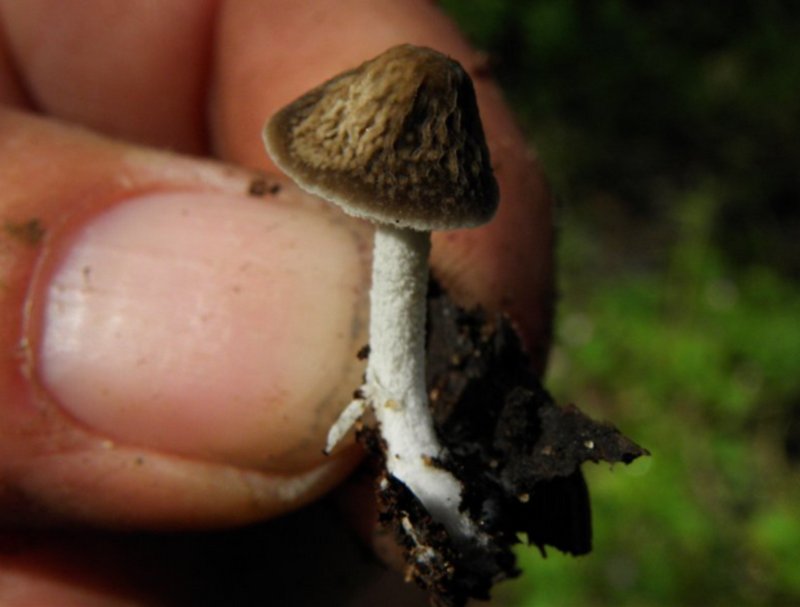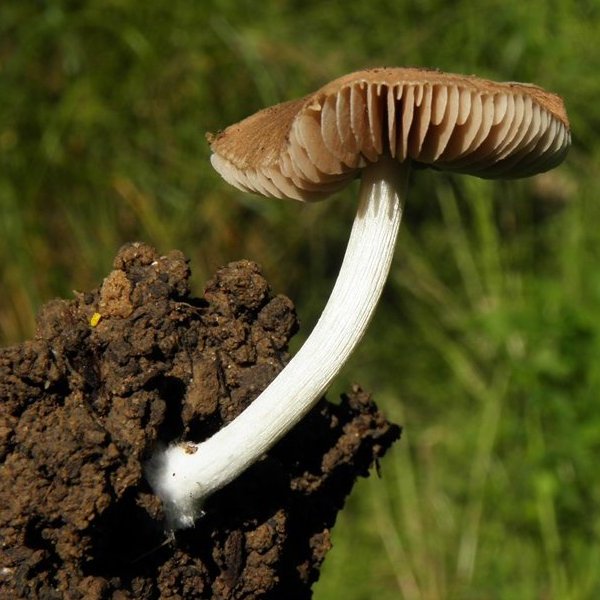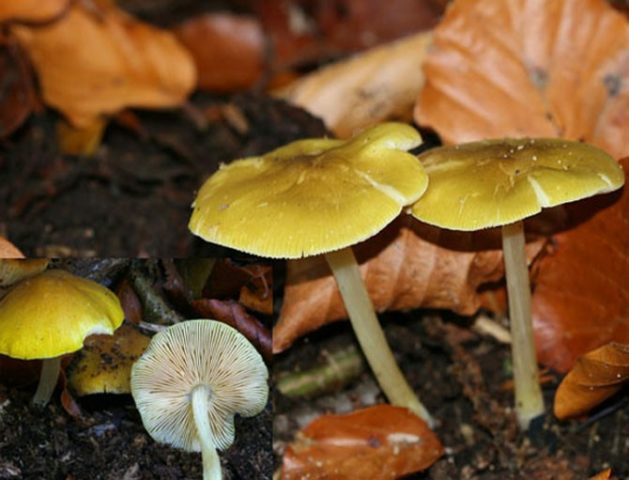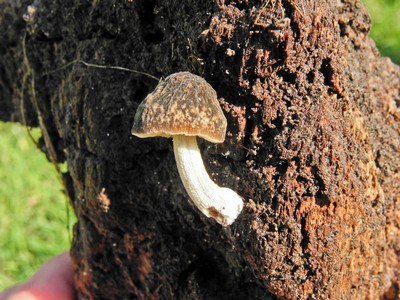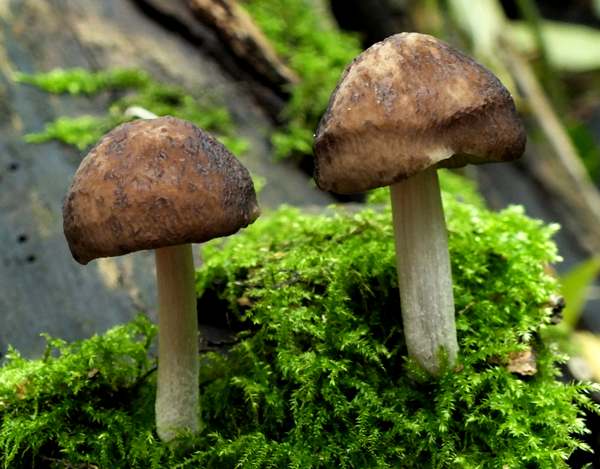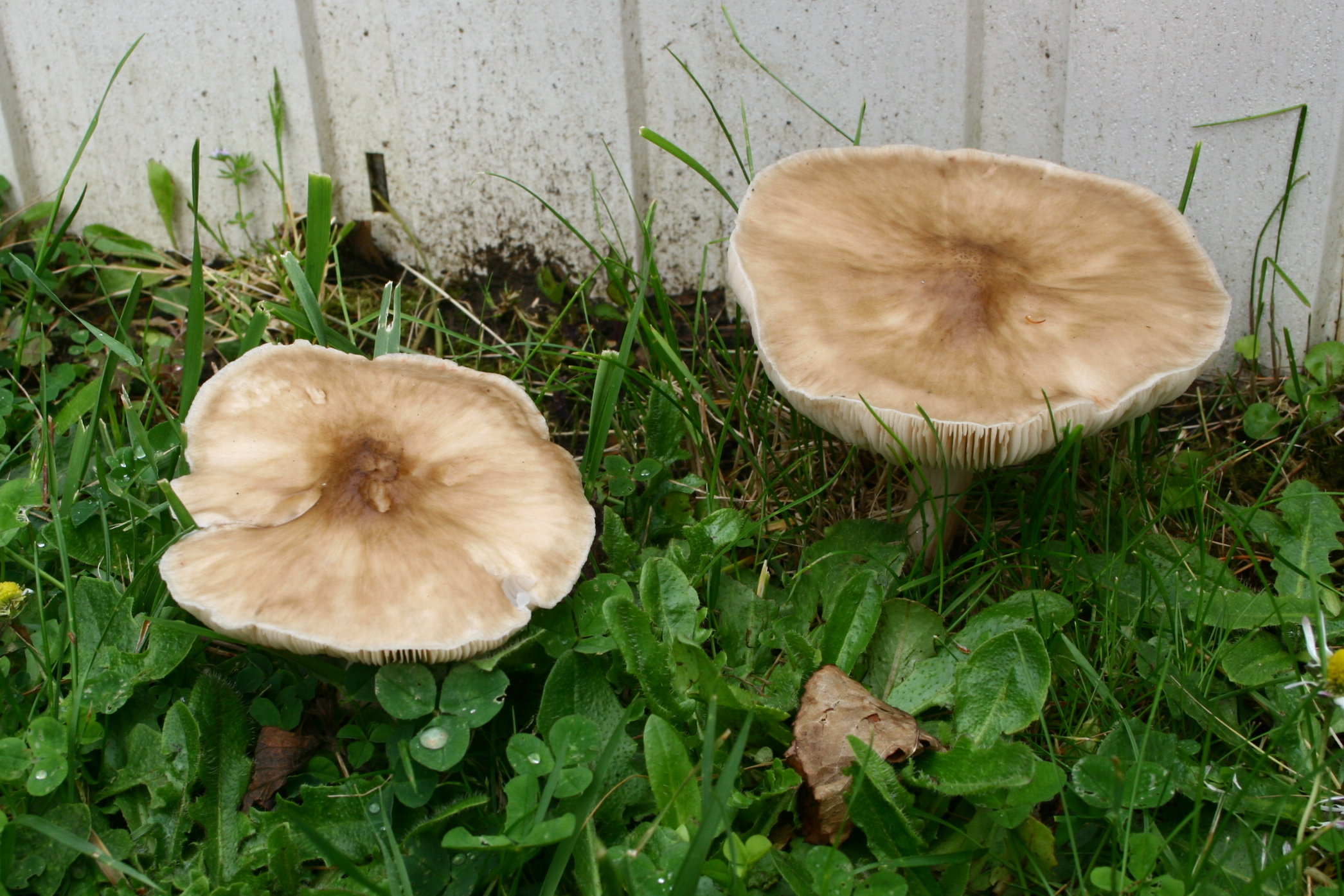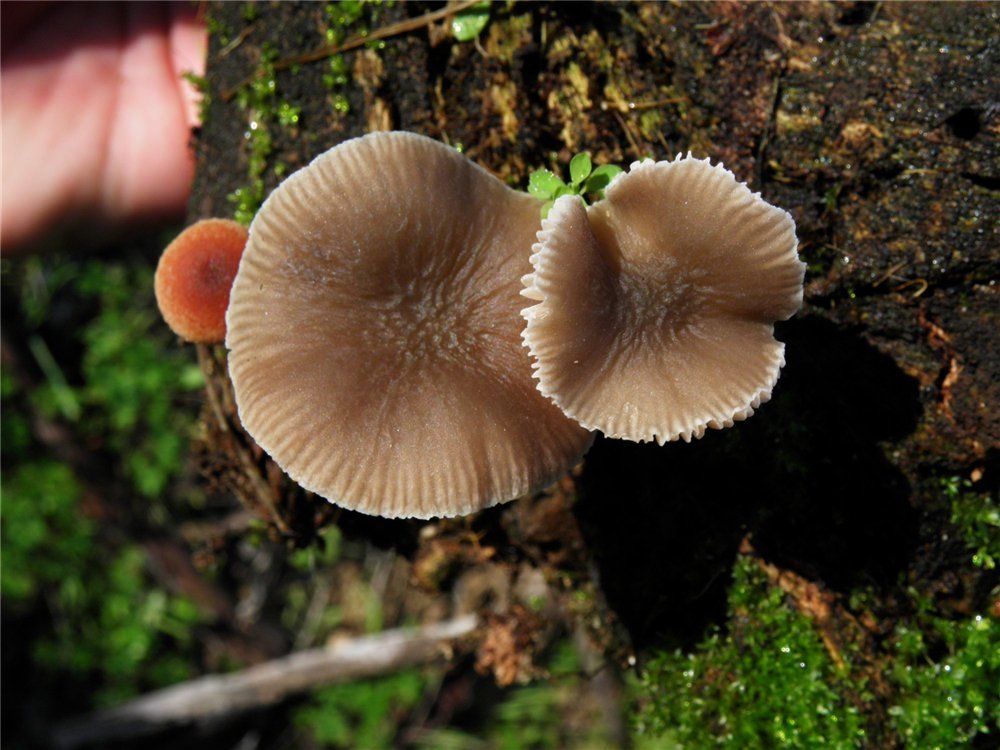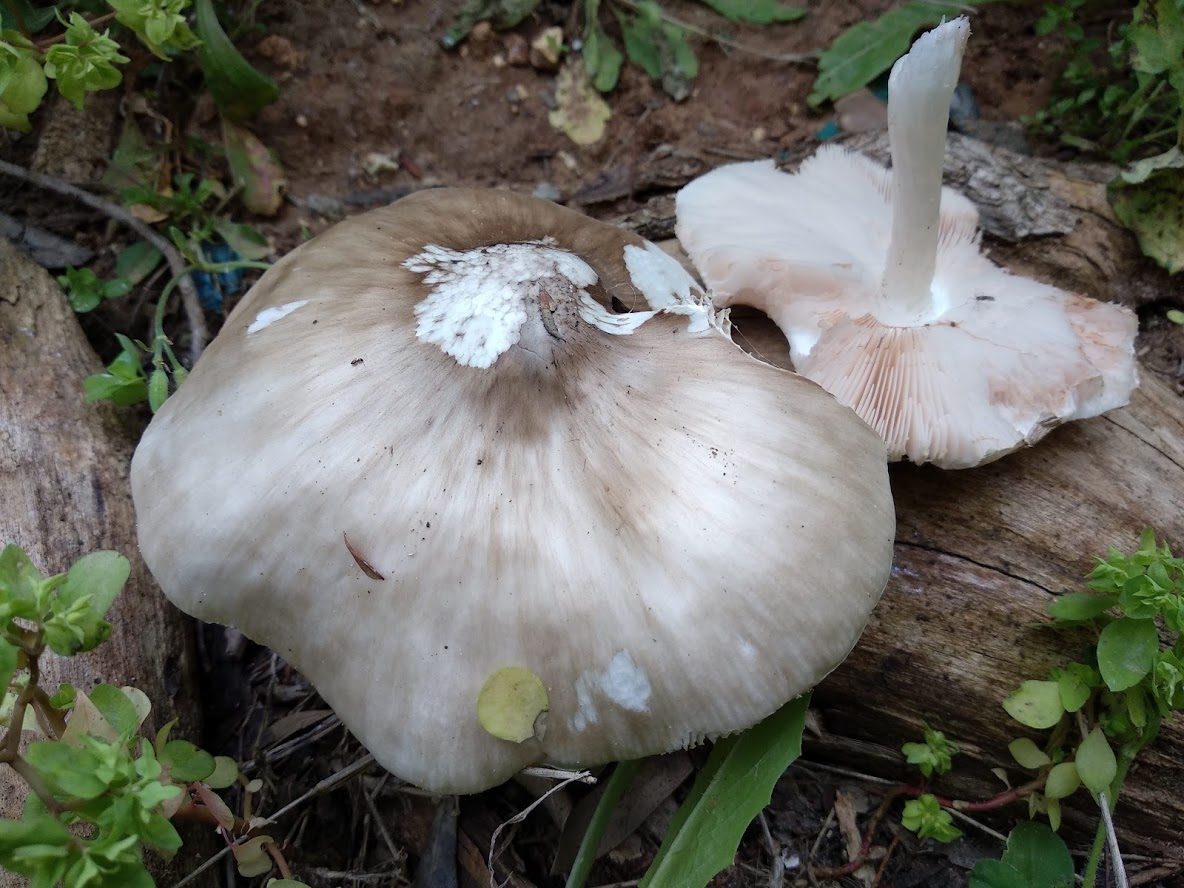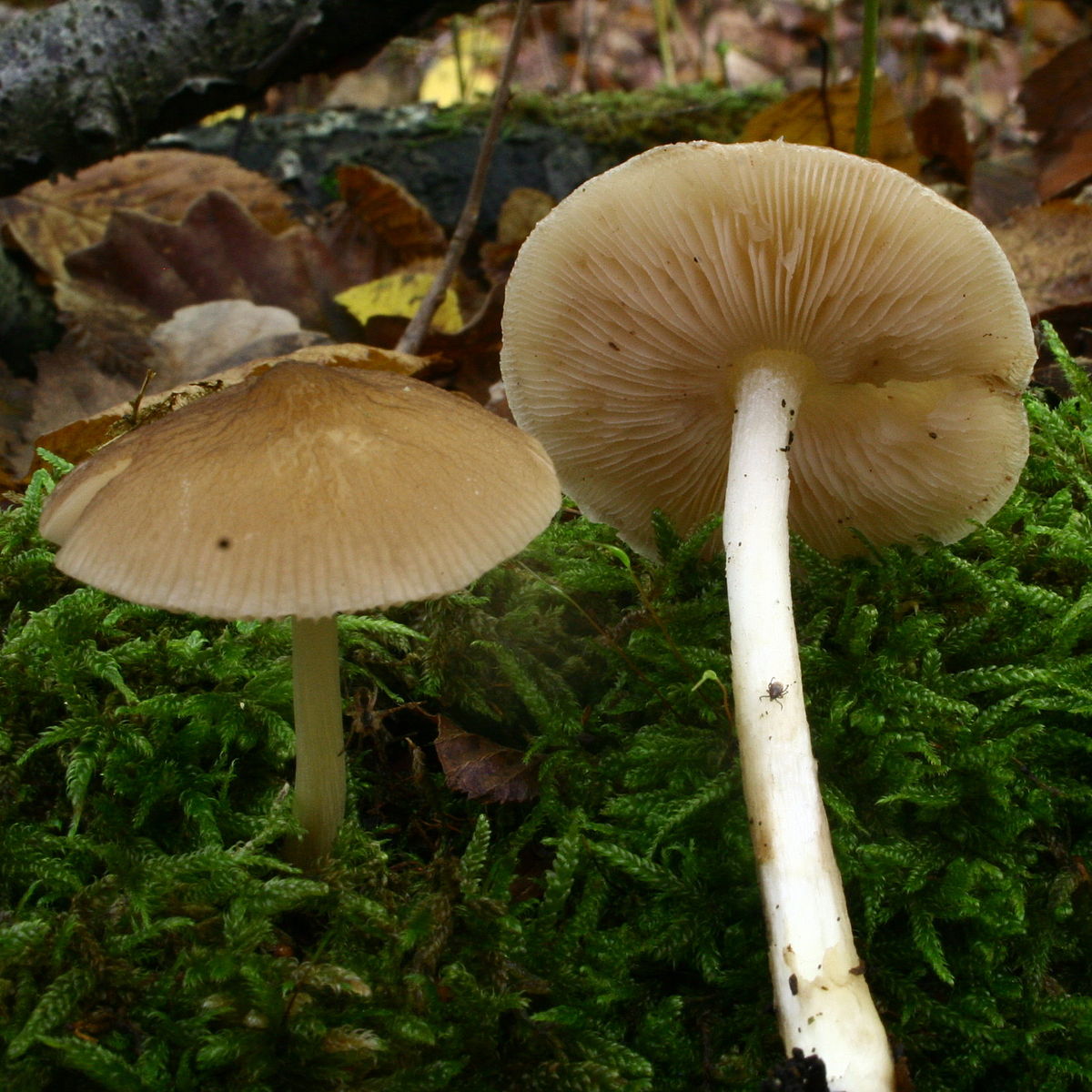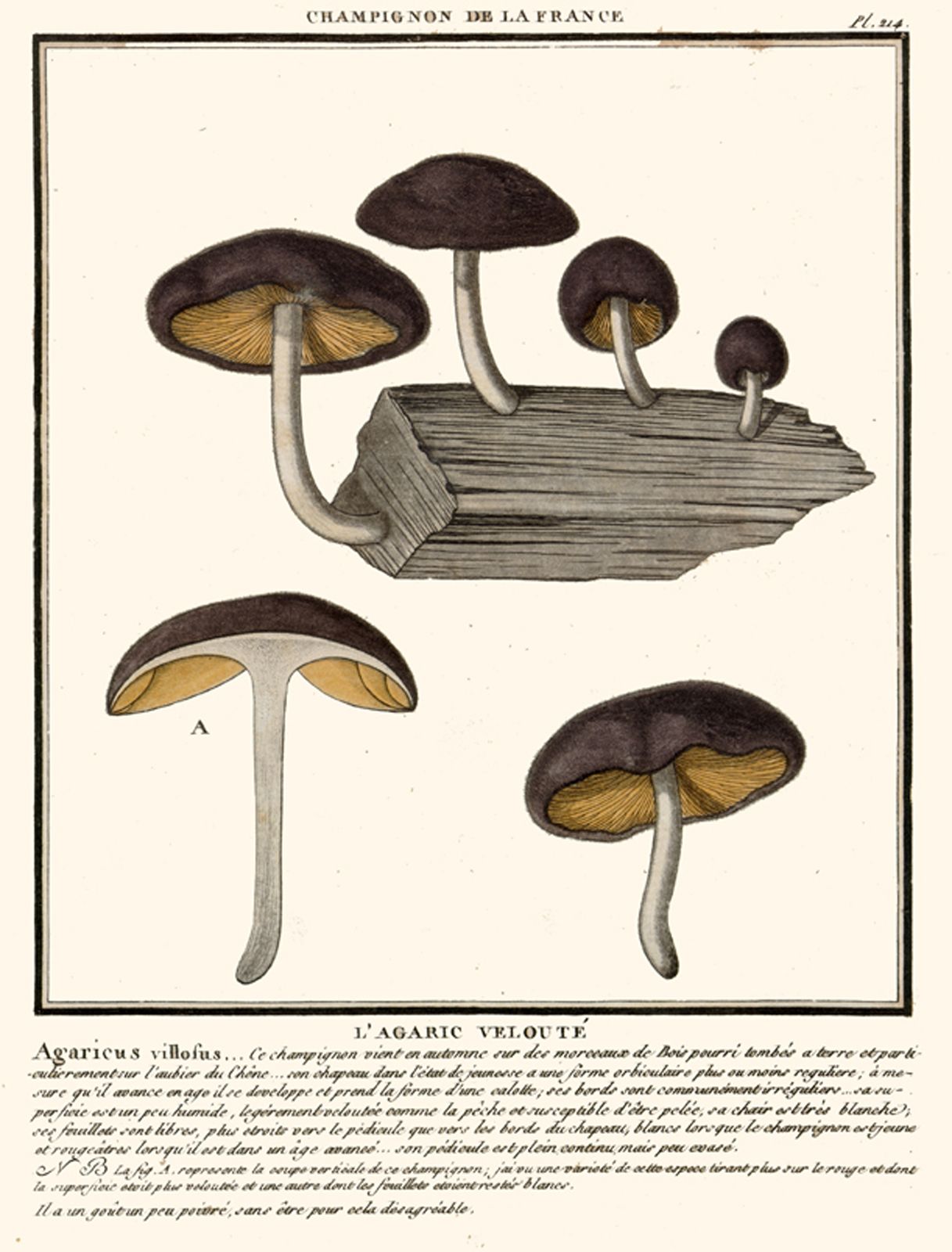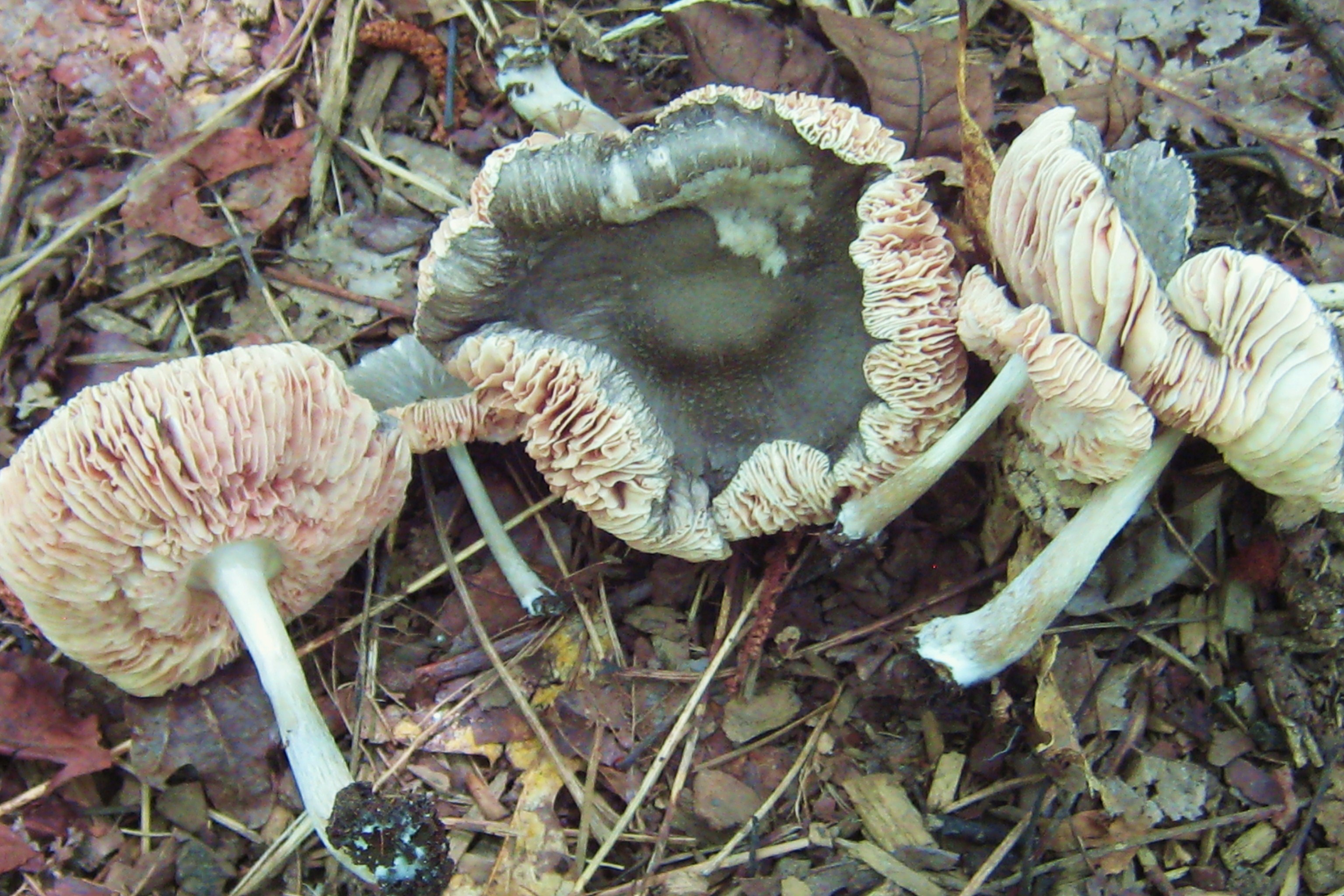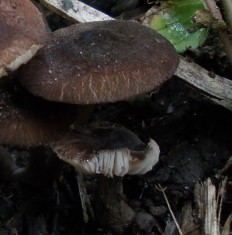Edible mushrooms, berries, herbs
Deer roach (Pluteus cervinus)
The reindeer roach also has such names as brown roach, dark fibrous roach, and deer mushroom. From May to October, it can be found in deciduous forests (especially where there is a birch or oak) growing on felled decaying wood, dead wood or stumps. It is found quite often in small groups.
The hat is 5 to 12-15 cm in diameter. It is bell-shaped at first, then convex-outstretched. In this case, it can be both lumpy and without a tubercle. The edges are weakly tubular. The surface is radially fibrous, smooth; the heart may have scales and is always darker. The color varies from gray-brown, chestnut-brown to dark brown-brown. In dry weather, the surface becomes light, discolored, the edges are cracked.
The plates are frequent, wide, free-lying. Young ones are white, later with a pinkish tinge.
The leg is cylindrical in shape, 6-9 cm long and 0.9-1.5 cm in diameter. The base of the leg is slightly widened. The surface is longitudinal fibrous, solid, dense, whitish-grayish in color with longitudinal brown fibers.
The pulp is soft, thin, white, tasteless, has a subtle unpleasant woody odor (some do not have it at all). When cut, the color of the pulp does not change.
Only hats are used for food. Pre-boiling is required for 10-15 minutes. Can be pickled and salted. Due to its low taste and a specific smell (which does not disappear even after cooking), it is rarely used in the preparation of mushroom dishes.
It looks like an edible wide-lamellar udemansiella, from which it differs in pinkish plates and a smell.
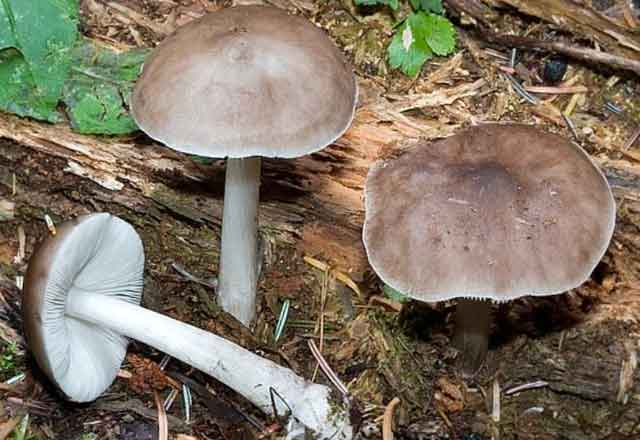


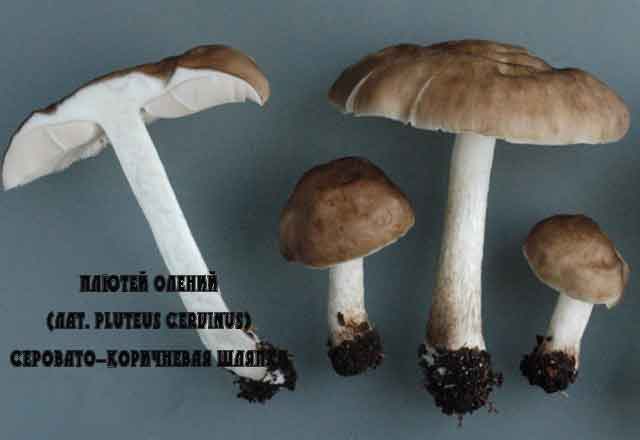
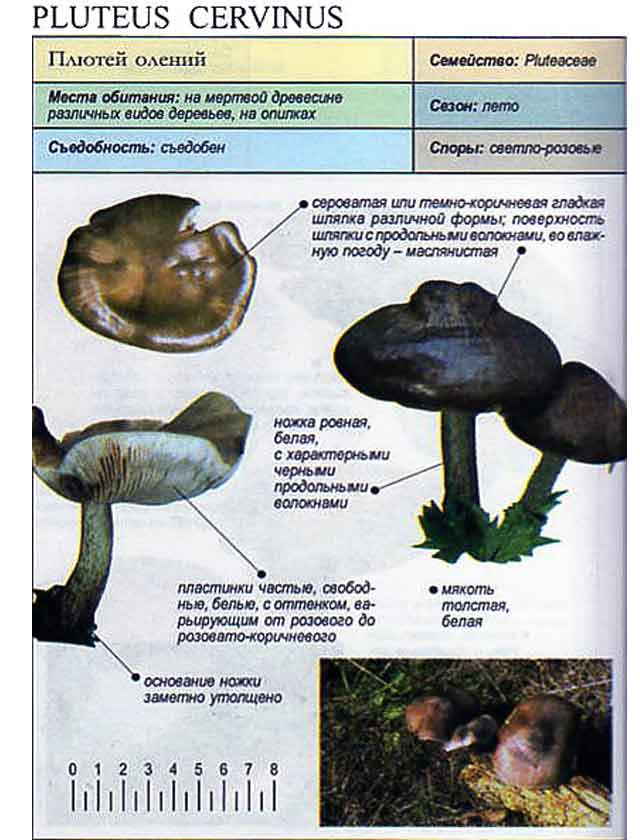
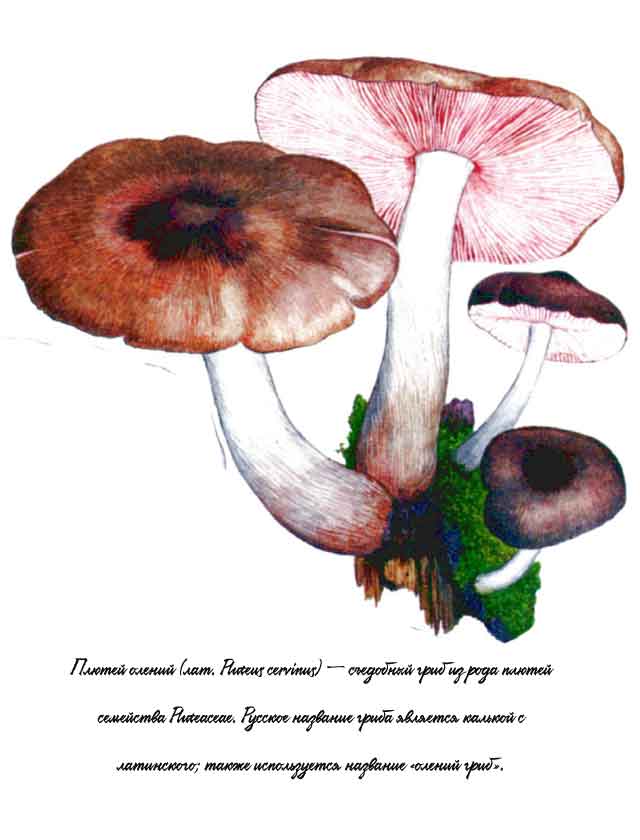
Plyutey veiny: photo and description
| Name: | Plutey veiny |
| Latin name: | Pluteus phlebophorus |
| Type of: | Conditionally edible |
| Synonyms: | Agaricus phlebophorus, Pluteus chrysophaeus |
| Specifications: | |
| Systematics: |
|
Plyutey venous belongs to the large Pluteyev family. The species has hardly been studied, so there is very little information about its suitability for food.
What does the veinous crimson look like?
It belongs to saprotrophs, can be found on the remains of deciduous trees and stumps, sometimes grows on rotten wood. It is widespread in the world, but it is not very easy to find it. The specimens are not tall, the maximum size is 10-12 cm.
The pulp is white, after cutting the color does not change. It smells unpleasant, the taste is sour.
Description of the hat
The cap of the venous spit can reach 6 cm in diameter, but this is rare. The average is 2 cm. Most often it has a conical shape, less often it is outstretched and convex from the outside.
The pulp is thin, has a tubercle on top. The surface is matt, covered with wrinkles, which are most noticeable in the center of the mushroom, colored light brown or dark brown. The edges are straight.
The inner part is covered with plates of pink or pale pink hue.
Leg description
The leg is elongated, thin, reaches a height of 10 cm, an average length of 6 cm. The diameter does not exceed 6 mm. It has a cylindrical shape and is attached to the center of the cap. In a young mushroom, the leg is dense, in a mature one it becomes hollow.
The surface is white, sometimes it becomes grayish or yellowish closer to the bottom. The fibers are longitudinal, the stem is covered with barely noticeable villi.
Where and how it grows
Plyutey veinous is widespread on the European mainland. It grows actively in deciduous forests, can appear in groups on the soil, but more often chooses the remains of wood.
Mushrooms can be found in the UK, Estonia, Latvia, Lithuania and other Baltic regions.They can be found in Ukraine and Belarus. Does not grow in the Balkans and the Iberian Peninsula.
In Russia, it is found in the middle lane, the maximum number grows in the Samara region.
It is found in limited quantities in Africa, America and Israel. In Russia, mushrooms of this species can be found from June to mid-October.
Is the mushroom edible or not
Refers to inedible, but some consider it conditionally edible. The species has practically not been studied, so there is no data on its suitability for food.
Doubles and their differences
The veinous crib is similar to the dwarf one. Refers to inedible, velvety hat, its diameter does not exceed 5 cm, brown-brown. The surface is shiny, the height of the leg is no more than 5 cm.
Another double - rocket gold-colored... The hat rarely reaches a diameter of 5 cm; it can be distinguished by its yellow color. It is considered conditionally edible, but there is no exact data on this.
Conclusion
Plyutey veinous is distinguished by its small size, inconspicuous appearance. It is difficult to find it in the forest, so research has not been carried out. This type of nutritional value has no.
White clue: photo and description
See what the rogue looks like in the photo:
In the photo, White Plyutey
More recently, research by biologists has shown that some subspecies have a small dose of the glucinogenic component. Therefore, the use of such mushrooms for cooking is highly questionable.
There are several subspecies:
- deer;
- White;
- scaly;
- noble;
- willow.
The mushroom can be used for food. Another name is lashes of kuchkovaty. You can meet him in Europe, Japan, China, Primorye and Siberia. Some specimens have been found in the states of the northern part of the African continent.
Main external characteristics:
- The lower part is up to 12 cm long, its thickness is within 1-2 cm. It is filled with pulp with fibers, white. The leg is smooth and firm. Volvo and ring are undetectable.
- The upper part is up to 12 cm in diameter, fragile, finely fleshy. On a young mushroom, the cap resembles a half of a sphere, then it opens up, a low blunt tubercle forms. It is fibrous, silky, white, sometimes with scales closer to the center.
- The plates are high, loose, white or slightly pinkish. But this shade appears in old mushrooms. The young have white plates.
- The pulp is white, soft. On the cut, it does not change color, without a pronounced odor. Near the cap, its color becomes close to yellow.
The mushroom itself does not have a distinct smell or taste.
Grows in gardens, forest plantations and vegetable gardens. Appears from May to November. On wood residues, on the lawn in places where there was mulching with sawdust, it often grows in mulched beds.
There are no poisonous mushrooms similar to rods without a ring and without a Volvo. But some mushroom pickers talk about similarities with a subspecies from the same Pluteyev family - orange-powerful.
It requires boiling for 15 minutes, which makes the mushroom suitable for further use. White stick can be used in second courses and for pickling.
It is not used in medical practice.
Types of mushroom plyutei
Deer roach (Pluteus cervinus)
Also known as deer mushroom. Medium to large size, with a cap diameter of 4-10 cm, sometimes up to 20 cm.The surface is smooth, silky, fibrous, cracks in mature mushrooms, becomes dry or slightly mucous, gray or grayish brown, sometimes the color changes from fawn to dark brown and black. The length of the leg reaches 15 cm, the shape is cylindrical, curved, swollen at the base, the structure is dense, solid, the color is white or whitish-gray.
Deer roach is a cosmopolitan mushroom that is found all over the world, growing on the wood of deciduous and coniferous trees.
Edible mushroom.
White corkscrew (Pluteus pellitus)
The cap is 3-5 cm in diameter, finely fleshy, with a tubercle in the center, the edge is torn, lobed. The surface is smooth, whitish in color, gradually acquires a grayish, grayish-brown or bluish color in the center, covered with pink or brown fibers. The length of the leg is up to 6 cm, its surface is shiny, fibrous.
Distributed in Eurasia from Western Europe to Western Siberia, and in northern Africa, a rare species. Grows on beech wood.
Little known edible mushroom.
Pluteus lion-yellow (Pluteus leoninus)
The cap is up to 8 cm in diameter, the shape is bell-shaped or flat-convex, there is a tubercle in the center, the edge is serrated. The surface is bare along the edge, velvety in the center, finely scaly, bright yellow, dark in the center. The leg is up to 7 cm long, about 1 cm in diameter, smooth, white with a yellow base.
The species is widespread in Eurasia, in northern Africa, where it grows in oak and beech forests, and is rare.
Edible mushroom.
Umber roast (Pluteus umbrosus)
The mushroom is medium in size, with a cap diameter of up to 10 cm. The cap is tomentose, wrinkled, whitish or dark brown, the edge is serrated, fibrous. Leg up to 10 cm in length, whitish or brownish, longitudinally fibrous, scaly.
The species grows in Eurasia and North America, on the wood of deciduous trees, a rare species.
Conditionally edible mushroom, as its pulp is bitter, but during boiling the bitterness disappears.
Poisonous and inedible species of mushroom plyuch
Plutey noble (Pluteus petasatus)
The cap reaches 15 cm in diameter. Its color is light, from whitish to ocher, the surface is silky, shiny, dry, rarely slimy, in the center it is covered with small brownish scales.
The species is found in Eurasia from Western Europe to the Far East, as well as in North America, but it is a rare species and is included in the Red Data Books of the Yaroslavl and Arkhangelsk regions of Russia. Grows in deciduous and mixed forests on beech, oak, poplar wood.
Inedible mushroom.
Scaly corkscrew (Pluteus ephebeus)
The mushroom is medium in size, the diameter of the cap is about 9 cm, the leg is 10 cm long. The surface of the cap is fibrous, grayish-brown, covered with scales in the center, cracking. The stem is whitish, shiny, smooth, with grooves.
Rare view. Grows on the wood of deciduous trees, distributed in Eurasia and North Africa.
Inedible mushroom.
Dwarf clown (Pluteus nanus)
The hat does not exceed 5 cm in diameter, the surface is velvety, wrinkled, brownish or chestnut-brown in color with a green tint, covered with a coating. Leg up to 5 cm long, light, with a yellowish or brown tint, smooth, shiny, fibrous.
The species is common in deciduous forests of Eurasia and North America.
Inedible mushroom.
Willow roach (Pluteus salicinus)
The diameter of the cap is up to 7 cm, the structure is thick-fleshed, the shape is from bell-shaped to flat-spread, with a tubercle. The edge is finely fleshy. The surface is shiny, wrinkled, covered with scales in the center, grayish or ash-gray with a bluish or pinkish-brown tint, darker in the center. Leg up to 12 cm long, shiny, bluish or grayish-olive.
Grows on wood of willow, alder, poplar, oak, beech. Found in Eurasia, North Africa and North America, a rare species.
Hallucinogenic mushroom.
In addition, there are genera of mushrooms with fruiting bodies similar to spits. One of them is entoloma, for which poisonous species are known. These mushrooms are distinguished by the fact that their plates are either narrowly adherent or creeping down, but they are never free, like that of a spit.
In the Rhodocybe fungi of the entolomaceae family, the plates are adherent and descending, the cap is with a depression in the center, and their spores are ornamented.
The clitopils have a depression on the cap, the plates are descending, the spores are striped.
Description
The hat is 1.5-5 centimeters in diameter, thin-fleshy, from conical to convex-outstretched shape, with a pronounced low tubercle. The surface is smooth or slightly wrinkled in the center, grayish-brown, it can be with a pink or olive tint, in the center to a brownish-brown color, the edge is grooved.
free, wide, frequent, whitish, whitish-pink or brownish with age with a whitish edge.
The leg is 3-7 × 0.2-0.6 cm, cylindrical, central, expanding towards the base, dense. The surface is whitish or pale gray with a reddish tinge, fibrous, sometimes with small scales.
The pulp is white or whitish-gray, does not change on the cut, the taste and smell are not expressed.
The remains of the bedspreads are absent, the spore powder is pink.
Spores are smooth, from ovate to broadly ellipsoid, 7-9 (10) × 5-7 µm.
The skin of the cap is hymeniform, consists of clavate and rounded cells, often with a pedunculate appendage, 30–80 × 20–45 µm in size, containing a brownish pigment. The integument of the peduncle consists of colorless cylindrical hyphae 4–12 µm wide.
Basidia are four-spore, 25–35 × 8–12 µm in size, thin-walled, clavate, colorless.
Cheilocystids 37–70 × 10–20 µm in size, clavate, fusiform or ampulliform, with an apical process, thin-walled, colorless or with brown pigment, numerous. Pleurocystids 50-110 × 15-35 µm, clavate or vesicular, thin-walled, colorless, with an apical appendage, numerous.
Definitioner
- Basidia (Basidia)
-
Lat. Basidia. A specialized structure of sexual reproduction in fungi, inherent only in Basidiomycetes. Basidia are terminal (end) elements of hyphae of various shapes and sizes, on which spores develop exogenously (outside).
Basidia are diverse in structure and method of attachment to hyphae.
According to the position relative to the axis of the hypha, to which they are attached, three types of basidia are distinguished:
Apical basidia are formed from the terminal cell of the hypha and are located parallel to its axis.
Pleurobasidia are formed from lateral processes and are located perpendicular to the axis of the hypha, which continues to grow and can form new processes with basidia.
Subasidia are formed from a lateral process, turned perpendicular to the axis of the hypha, which, after the formation of one basidium, stops its growth.
Based on morphology:
Holobasidia - unicellular basidia, not divided by septa (see Fig. A, D.).
Phragmobasidia are divided by transverse or vertical septa, usually into four cells (see Fig. B, C).
By type of development:
Heterobasidia consists of two parts - hypobasidia and epibasidia developing from it, with or without partitions (see Fig. C, B) (see Fig. D).
Homobasidia is not divided into hypo- and epibasidia and in all cases is considered holobasidia (Fig. A).
Basidia is the place of karyogamy, meiosis and the formation of basidiospores. Homobasidia, as a rule, is not functionally divided, and meiosis follows karyogamy in it. However, basidia can be divided into probasidia - the site of karyogamy and metabasidia - the site of meiosis. Probasidium is often a dormant spore, for example in rust fungi. In such cases, probazidia grows with metabasidia, in which meiosis occurs and on which basidiospores are formed (see Fig. E).
See Karyogamy, Meiosis, Gifa.
- Pileipellis
-
Lat. Pileipellis, skin - differentiated surface layer of the cap of agaricoid basidiomycetes. The structure of the skin in most cases differs from the inner flesh of the cap and may have a different structure. The structural features of pileipellis are often used as diagnostic features in descriptions of fungi species.
According to their structure, they are divided into four main types: cutis, trichoderma, hymeniderma and epithelium.
See Agaricoid fungi, Basidiomycete, Cutis, Trichoderma, Gimeniderm, Epithelium.
- Pileipellis (Pileipellis)
-
Lat. Pileipellis, skin - differentiated surface layer of the cap of agaricoid basidiomycetes. The structure of the skin in most cases differs from the inner flesh of the cap and may have a different structure. The structural features of pileipellis are often used as diagnostic features in descriptions of fungi species.
According to their structure, they are divided into four main types: cutis, trichoderma, hymeniderma and epithelium.
See Agaricoid fungi, Basidiomycete, Cutis, Trichoderma, Gimeniderm, Epithelium.
- Trichoderma (Trichoderma)
-
The type of cap skin, usually consists of straight, septate elements located more or less perpendicular to the surface and laid both at the same and at different levels; the ends of the hyphae can be morphologically modified and represent dermatocystids. The surface of the cap is velvety to almost felt.
Lat. Trichoderm.
Trichoderma, in turn, is subdivided into intertwined trichoderma and irregular trichoderma.
Intertwined trichoderm (Intricate trichoderm) - trichoderm, consisting of intertwined hyphae, located not parallel to each other and forming a tomentose pubescence.
Irregular trichoderm - Trichoderma, consisting of irregularly branching hyphae.
See Dermatotsistida, Hypha, Septa.
- Cutis
-
The type of cap skin, consists of creeping non-gelatinized hyphae located parallel to the surface. The surface of the cap looks smooth.
Lat. Cutis.
See Gifa.

